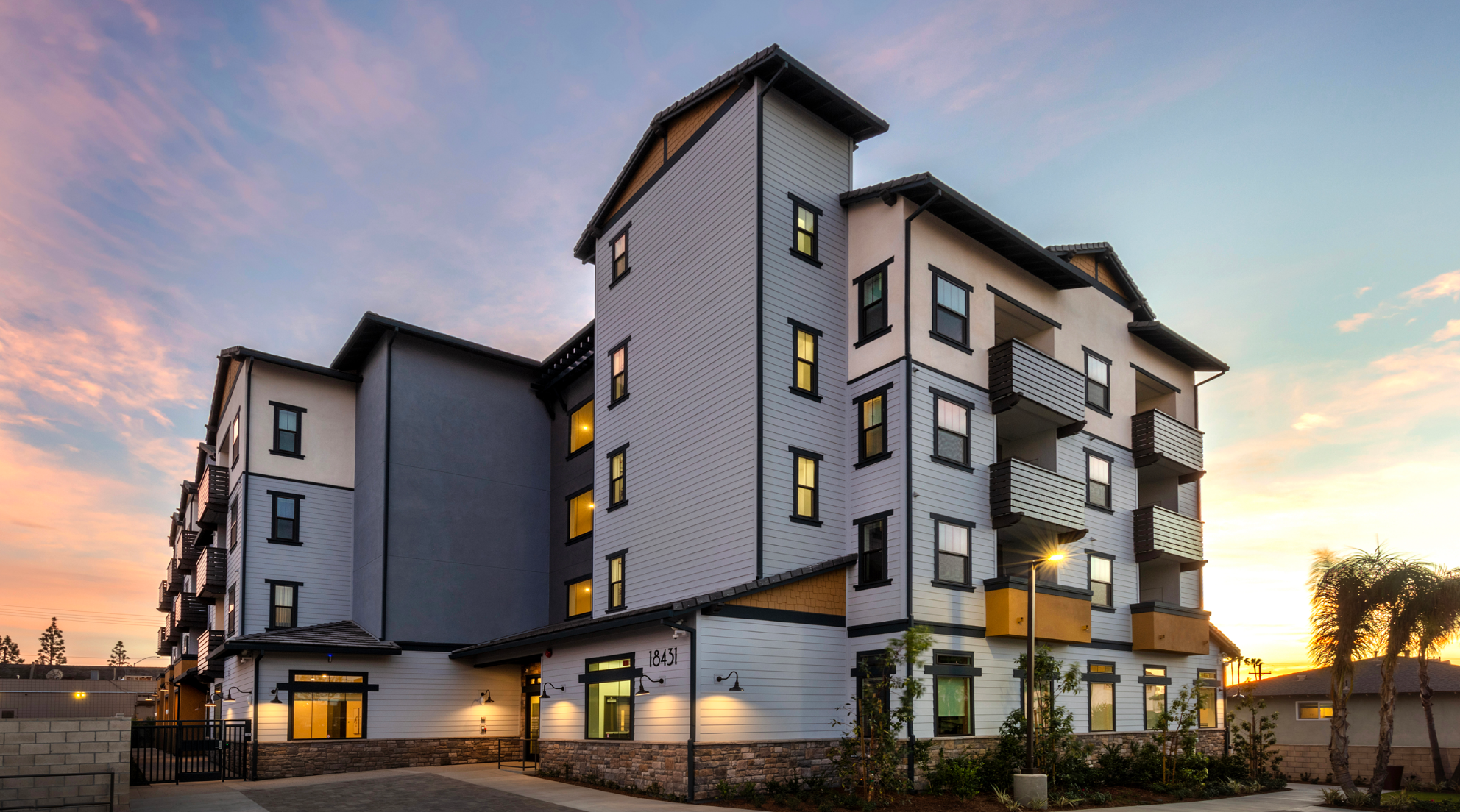View the Report
Jump to All Downloads & LinksAbout This Series
This series focuses on the challenges of addressing the health and health care needs, both related and unrelated to the pandemic, of people who are homeless, and spotlights emerging care innovations, partnerships, and practices across the state.
When the COVID-19 pandemic hit, Shannon Smith-Bernardin, PhD, RN, CNL, cofounder of the National Sobering Collaborative, was concerned about people with alcohol use disorders who are experiencing homelessness. They were being placed in isolation, quarantine, or protective housing for their safety. Yet in these settings, they would be at high risk of withdrawal and the array of health care risks it brings, including death.
Recognizing the importance of this issue, Smith-Bernardin partnered with Alameda County and San Francisco County to pilot one of the country’s first managed alcohol programs. They are using these pilots to not only meet the immediate health needs of this population, but also to collect best practices in the hopes of replicating the program for people experiencing homelessness more broadly and under non-COVID-19 circumstances in the future.
Background
While in recent years the opioid epidemic has gained widespread attention, alcohol use disorder is the most prevalent substance use disorder in California and in the country. In 2018, it accounted for more nonfatal emergency department (ED) visits in the state than all other drug diagnoses combined, including illicit use of pharmaceutical drugs and prescribed opiates. A recent national study showed that one in eight Americans has alcohol use disorder. Among people experiencing homelessness, the Substance Abuse and Mental Health Services Administration found that 38% are physically dependent on alcohol.
Alcohol use disorder treatment can be provided in different ways. Some forms of it, including those currently being piloted in Alameda and San Francisco Counties in response to the pandemic, are rooted in the concept of harm reduction, an approach that promotes interventions intended to decrease the negative physical or social consequences associated with human behaviors. Unlike programs such as Alcoholics Anonymous, the harm reduction approach is not abstinence-based. Examples of public health initiatives that employ harm reduction principles include methadone or Suboxone treatment programs for people with opioid use disorders, or syringe exchange programs to mitigate the spread of HIV. While a harm reduction approach can be used to treat alcohol use disorder for withdrawal, one of the main challenges to doing so is that it must be done in a high-touch, carefully managed, and stepwise fashion to avoid abrupt withdrawal and possible risk of death.
Managed Alcohol Programs
Established in countries such as Canada and Australia, a managed alcohol program is usually administered by a nurse and trained support staff in a facility such as a homeless shelter or a transitional or permanent home, and is one method to minimize harm for those with alcohol use disorder. By prescribing limited quantities of alcohol, the model aims to prevent potentially life-threatening effects of alcohol withdrawal, such as seizures and injuries.
Learn more about managed alcohol programs from the Canadian Institute for Substance Use Research.
Innovation
Using a Harm Reduction Lens During COVID-19
In response to the COVID-19 pandemic, programs such as California’s Project Roomkey are sheltering exposed or high-risk people experiencing homelessness in hotel and motel rooms. While these efforts have been essential, for those with alcohol use disorders, an unintended consequence of being removed from their communities and having their movement restricted has been that they suddenly have limited access to alcohol, creating the potential for alcohol withdrawal crises. Alcohol withdrawal can cause various complications and is most serious when it occurs abruptly. By one estimate, roughly 1 in 20 people going through alcohol withdrawal experience delirium tremens, a condition whereby the brain is unable to regulate circulation and breathing and which can lead to heart attack, stroke, and death.
To avoid these complications, withdrawal from alcohol often requires close monitoring in medical detox programs or in hospitals. While protecting people from infection or poor health outcomes due to COVID-19, placing them in isolation and quarantine also raises the likelihood of abrupt alcohol withdrawal. “Providing the level of observation and intervention that’s necessary to prevent withdrawal is not feasible for most of these hotels,” said Smith-Bernardin. “So we are piloting one of the country’s first managed alcohol programs where we complete an assessment at intake in the hotel, and then provide alcohol on a scheduled basis a few times a day.”
This unique managed alcohol model aims to significantly reduce harm for individuals while simultaneously reducing the risk of COVID-19 transmission. By providing clients with a medically supervised supply of alcohol and supportive services, the program provides an incentive and support structure for them to remain in the isolation or quarantine setting for the duration of their stay and endure the realities of this temporary placement. “It’s not across the board, but for people with chronic alcohol use, it can be a very challenging experience to be placed individually into a room without their community supports,” said Smith-Bernardin.
Implementation
Supporting Clients in a Safe and Controlled Environment
Through this pilot, Alameda and San Francisco Counties currently operate hotel-based alcohol management programs out of eight Project Roomkey locations. To date, they estimate that roughly 30–40 higher-risk clients and approximately 70 lower-risk clients have been served in these settings. People experiencing homelessness are referred to these hotel-based programs from a variety of sources, including EDs, urgent care clinics, primary care providers, street health or street medicine teams, and shelters. Referrals are accepted via phone for 10–14 hours a day, seven days a week, and screened by physicians.
Once someone is placed in an isolation and quarantine site with an alcohol management program, a registered nurse (RN) then completes a comprehensive health assessment and recommends a set dosage of alcohol to be given to the person by trained support staff at specific intervals. In San Francisco, a nurse is involved in the entire process, as the programs in that county have seen more clients with severe alcohol use disorder. To get a complete picture of the client’s goals and current consumption, the RN typically uses motivational interviewing techniques (PDF) and asks questions such as:
- Do you drink more in the morning to stave off withdrawals?
- How many drinks do you need to avoid feeling sick?
- How much time passes between drinks before you begin to go into withdrawal?
- What are your goals related to your alcohol or substance use disorder? Do you want to cut back?
Based on responses to the assessment and these questions, an individual may be prescribed, for example, two 12-ounce beers to be administered at 8 AM, noon, 4 PM, and 8 PM. In Alameda County, clients are provided dosage during allotted break times (an effort to reduce COVID-19 transmission overall), but receive the full day’s dosage in specific increments throughout the day to ensure that it is not consumed all at once.
There are two types of Project Roomkey hotels — one is designated for quarantine and isolation purposes, and the other provides protective housing to people deemed at high risk for experiencing poor health outcomes if they were to contract COVID-19, such as those with chronic medical conditions. While Alameda County has a mix of both types, the managed alcohol program is running in protective housing sites where clients are not confined to their rooms. Clients do not have to drink under observation and are welcome to receive their allotted amounts to consume in the privacy of their rooms and to manage the consumption schedule as they see fit. Socially distanced cigarette or outside breaks are part of the protocol in Alameda where staff provide masks, so that clients can get fresh air and then return inside to receive their next allotted dose of alcohol.
Each pilot program has robust support staffing. In Alameda County, for example, all clients are assigned an interim case manager during their Roomkey hotel stay who assesses eligibility for various services and completes referrals as appropriate. Clients are also given the option to be connected to medication-assisted therapy such as naltrexone, buprenorphine, and Suboxone at intake, during their stay, and at discharge. Referrals can be made to mental health staff and substance use specialists who provide both on-site coordination and client visits (sometimes telephonically, given social-distancing requirements). Similarly, the San Francisco programs have coordinated with the county’s Addiction Telehealth Program, which over the course of the pandemic has been adapted to coordinate same-day screening, prescriptions, and medication delivery directly to clients at isolation and quarantine sites.
When clients complete their isolation or quarantine periods and are discharged from the hotel-based programs, they are encouraged to engage in community-based treatment services. If people are interested in pursuing such treatment, staff provide direct referrals and warm handoffs to the appropriate services. “Will every client want to go into standard-of-care abstinence-based treatment at discharge?” asks Smith-Bernardin. “No. Do we try to make sure they know all their options and how to attend or get follow-up? Definitely.”
Future Lessons
Envisioning the Future of Alcohol Management
For many years, Smith-Bernardin and leaders throughout San Francisco have tried to get an alcohol management program set up, but other priorities in harm reduction, such as addressing the increase of methamphetamine use, took precedence. The pandemic, however, served as an unexpected catalyst to test this approach. After testing the model in this crisis environment, Smith-Bernardin now hopes to expand the program on a more organized scale. She explains that a successful alcohol management program ideally houses everyone in the same building to create a community of people with similar experiences. Project Roomkey’s mission to mitigate COVID-19 uniquely lent itself to creating these conditions, and may provide a future road map for cities looking for alternative approaches to addressing alcohol use disorder among their homeless populations.
The University of California, San Francisco’s Center for Vulnerable Populations is in the process of setting up a research and evaluation plan for the two pilot programs in the Bay Area to examine whether the efforts will result in positive outcomes at these temporary housing facilities, including ED and jail cost avoidance. Presenting the evidence on how cities can save public funds will be a significant next step to advance the implementation of managed alcohol programs across the country. Smith-Bernardin said, “We already see that people who typically have frequent police interactions are now avoiding the ED altogether, because they’re in hotels and drinking inside. That type of community data is going to be really important in the end.”
She is optimistic about the impacts of these programs. In Canada, a leader in implementing managed alcohol programs, such efforts have stabilized clients to the point where they can begin addressing additional chronic medical issues or preventive care needs. The opportunity to receive medical and behavioral health care, with increased stability from housing and managed alcohol, allows clients to gain traction with improving their overall health. While a primary purpose of a managed alcohol program is to prevent harms related to chronic alcohol use including overdose and withdrawal, there is also great potential and evidence that the approach will improve long-term health and quality of life, or slow health decline.
Though Project Roomkey’s mission to prevent high-risk people experiencing homelessness from contracting COVID-19 and to reduce community spread of illness is temporary, these stabilizing hotel-based alcohol management programs have created a unique environment for clients to stabilize and assess opportunities to improve their health. The hotel-based care teams are tracking referrals to services and discharge, and Smith-Bernardin has been encouraged by early examples of residents who have connected to longer-term behavioral and mental health services as a result of this program. Ultimately, she says, she is hopeful that these initial pilots will catalyze further spread of this innovation.
Authors & Contributors
Priti Khanal, MPH
Priti Khanal is a program officer at the Center for Health Care Strategies (CHCS). CHCS is a nonprofit policy center dedicated to improving the health of Americans with low incomes through partnerships that promote innovations in publicly financed health care, especially for individual with complex, high-cost health care needs.
Rachel Davis, MPA
Rachel Davis is the director for complex care at CHCS.





